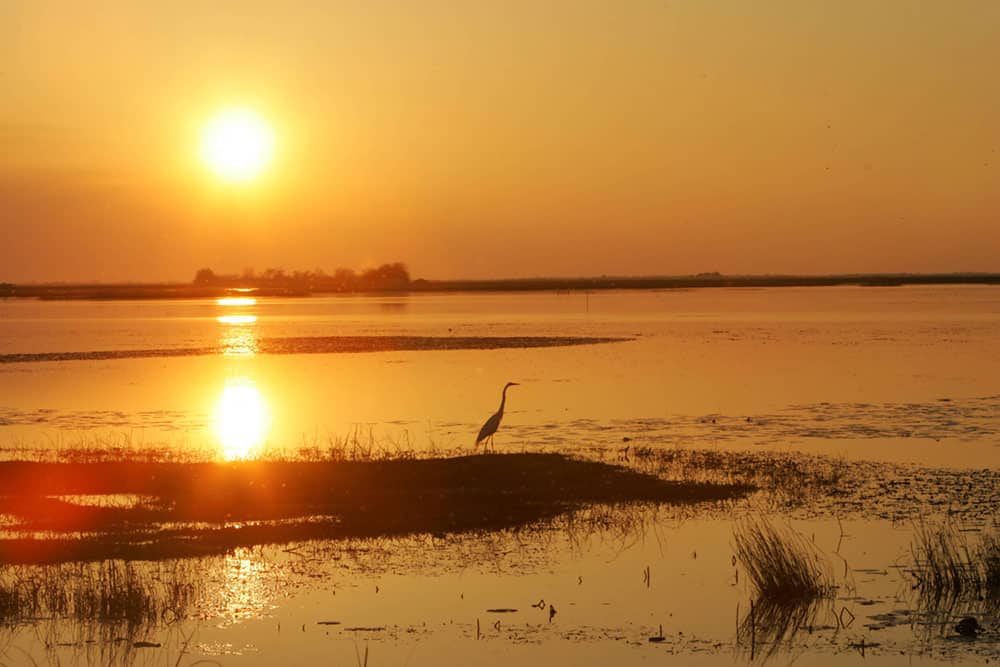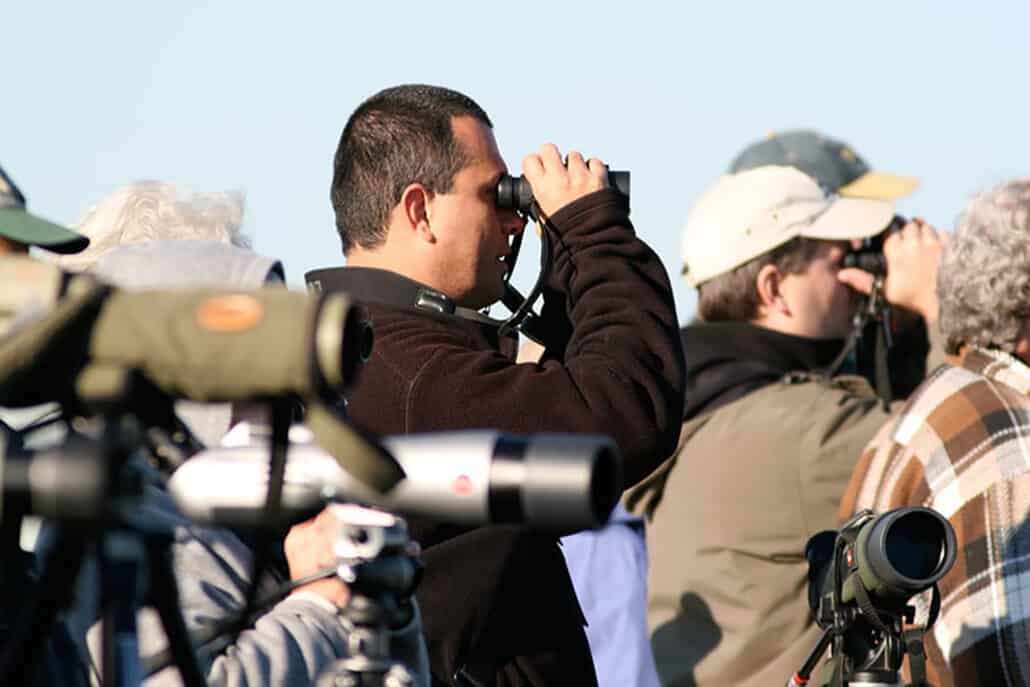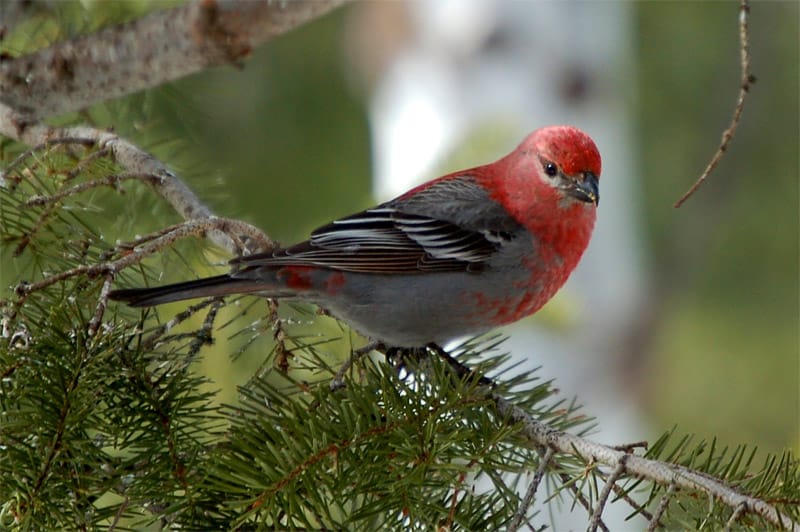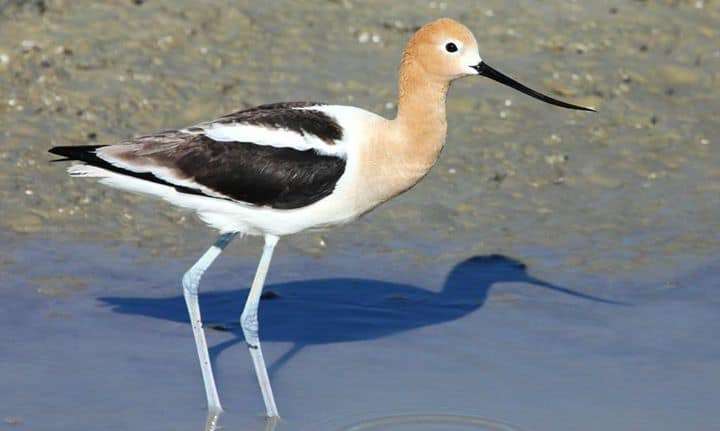1. “The Sherburne Complex”
Owned by the Louisiana Department of Wildlife & Fisheries (Sherburne Wildlife Management Area), U.S. Fish & Wildlife Service (Atchafalaya National Wildlife Refuge), and the U.S. Army Corps of Engineers (Indian Bayou and Bayou des Ourses Natural Areas), and comprising tens of thousands of contiguous acres of bottomland hardwood forests, cypress sloughs, bayous, and the Atchafalaya River itself, this vast area hosts a dense nesting concentrations of numerous species of swamp-dwelling raptors, flycatchers, vireos, warblers and other songbirds. Birding is excellent on a year-round basis, but peaks April through September. For more information, contact the Louisiana Dept. of Wildlife & Fisheries (Sherburne WMA) 337-948-0255;
U.S. Fish & Wildlife Service (Atchafalaya Basin NWR) 985-882-2030.
U.S. Army Corps of Engineers (Indian Bayou, Bayou des Ourses Natural Areas) 337-585-0853.
2. Sabine National Wildlife Refuge
Features 220,000 acres of marsh/shallow lake habitat. This is probably the best site in the state to see roseate spoonbills and alligators, especially along the refuge’s Wetland Walkway, a 1-mile hard-surfaced trail with observation decks. For more info, contact 337.762.3816 and www.sabine.fws.gov.
3. Lacassine National Wildlife Refuge
Known more for its winter ducks and geese, this 35,000-acre refuge is a matrix of marshes, lakes, bayous, and riparian woodlands, and is home to a highly diverse bird community that changes every season. Rare species include black-bellied whistling duck, crested caracara, and vermilion flycatcher. For more info, contact 337-774-5923 and www.lacassine.fws.gov
4. Big Branch NWR/Bayou Sauvage National Wildlife Refuges
Only a few miles apart, these two large refuges encompass a dizzying array of habitats ranging from longleaf pine forests to marshes, lakes, bayous, bottomland hardwood forests, and swamps. The 660-foot raised boardwalk through the longleaf pine forest at Big Branch’s “Boy Scout Unit” is one of the best places in eastern Louisiana to view the endangered red-cockaded woodpecker. For more info, contact 985.882.2000 and www.southeastlouisiana.fws.gov/BigBranch.html
5. Peveto Woods Sanctuary
Owned by the Baton Rouge chapter of the National Audubon Society, this small coastal chenier forest serves as crucial “stopover habitat” for migrating flycatchers, vireos, thrushes, warblers, tanagers, grosbeaks, orioles, and many other neotropical species that travel through during spring (March through May) and fall (August through October) migration. This is the most highly visited bird watching site in Louisiana, attracting people from all over the world. For more info, contact the Baton Rouge Audubon Society at 225-757-1765 or www.braudubon.org/sanctuaries.asp .
6. Kisatchie National Forest – Vernon Ranger District
Contains the largest and best-maintained longleaf pine forests in Louisiana, and is home to not only Bachman’s sparrow and the endangered red-cockaded woodpecker but also the best wildflower communities remaining in the state. Additional nesting bird species include broad-winged hawk, American kestrel, eastern wood-pewee, hooded warbler, and yellow-breasted chat. For more info, contact the Forest’s Supervisor’s Office in Pineville, LA at 318-473-7160.
7. The “Rice Country” of Southwestern Louisiana
This vast triangular section located between the cities of Ville Platte to the north and Lake Charles and Lafayette to the south annually hosts the largest concentrations of ducks, geese, raptors, shorebirds, and sparrows in all of the southern U.S. The winter months of December through February are by far the best times to visit, but shorebird action is also hot during spring (March through May) and fall (August through October) migration. For more info, contact the Acadiana Park Nature Station, Lafayette, LA at 337-291-8448 and www.naturestation.org
8. Grand Isle, Louisiana
Situated just off the southeastern coast of the state, this unique barrier island town features the best year-round bird watching in the state. From seabirds to warblers, Grand Isle has it all. For outstanding shorebird action, don’t forget to check out the huge tidal flats along the Port Fourchon access road, 10 miles north of Grand Isle. For more information, contact the Louisiana Nature Conservancy Office there 985.787.2514 or in Baton Rouge 225-338-1040; www.louisiananature.org
9. Black Bayou Lake National Wildlife Refuge
Established in 1997, this 4,800-acre refuge is situated just north of suburban Monroe, LA. Featured habitats include bottomland hardwood forest, cypress-tupelo swamp, and a sliver of oak-pine upland forest. The refuge hosts most all of Louisiana’s wading bird species, with anhinga being the biggest draw. Spring and fall months highlight warbler migration. The action really heats up in winter with the arrival of ducks and sparrows (including Leconte’s and Henslow’s sparrows). Bald eagle and osprey also frequently hunt over the 1,800-acre lake. For more info, contact the refuge at 318-387-1114; www.southeast.fws.gov/BlackBayouLake
10. Bickham Dickson Park
Also known as Red River Education and Research Park, 585-acre Bickham Dickson Park is Shreveport’s largest urban park. Various associated habitats include open fields, bottomland hardwood forests, a 200-acre oxbow lake, and the Red River itself. The best bird watching is at the back of the park, along the miles of trails and dirt roads. A total of 216 bird species have been recorded from the park. Specialties include yellow-crowned night-heron, red-headed woodpecker, eastern bluebird, loggerhead shrike, and Baltimore oriole. For more information, contact the Shreveport Bird Study Group, 318.797.5338 or www.softdisk.com/comp/birds




